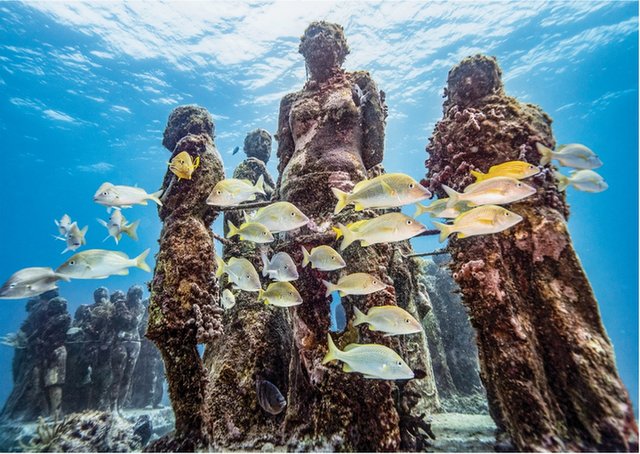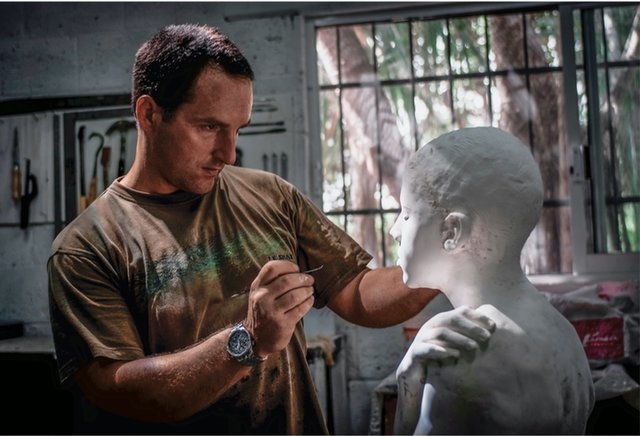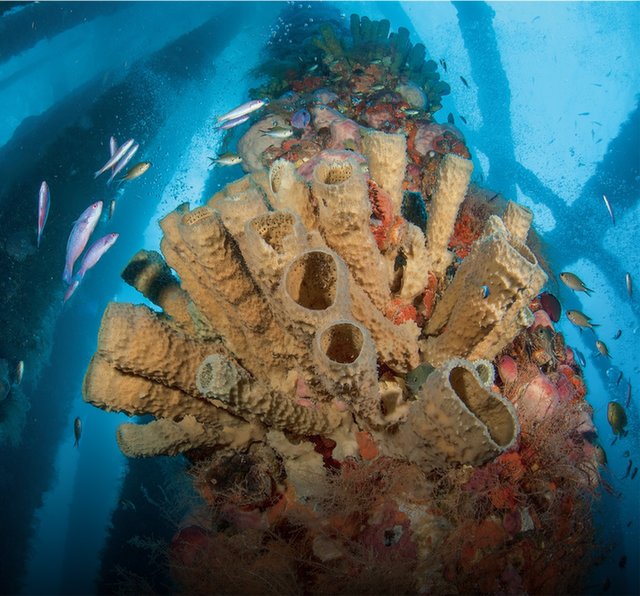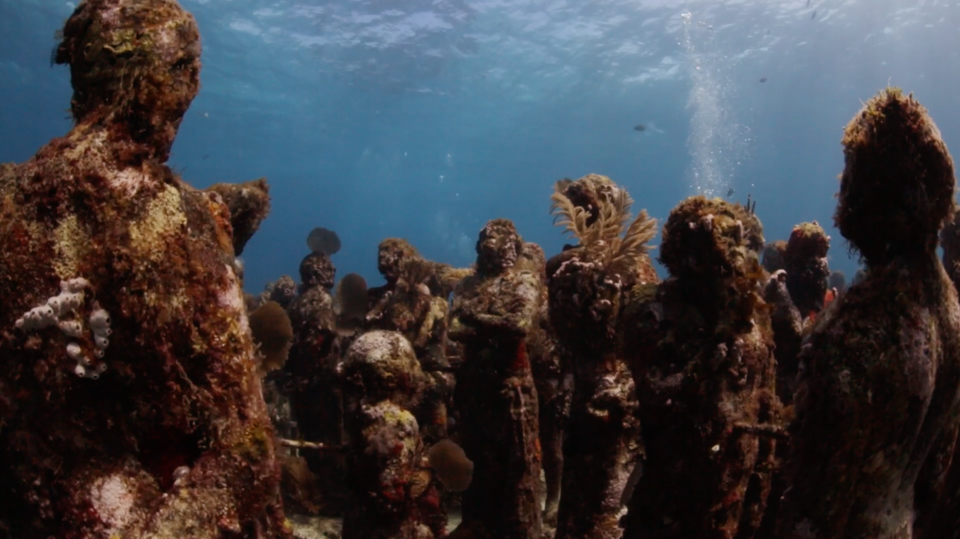GettingStarted
Toprotectnaturalreefs,wecanstartbuildingartificialones.Artificialreefscanservedifferentpurposes.Somecanpreventcoastalerosion.Theyforcewavesoffshoreinsteadoflandingonthecoastline.Otherscanholdsedimentonbeaches.Stillothersareahabitatforaquatic life.
Howdoyoubuildanartificialreef?Alargeobjectisinstalledwheretheseabottomisflatandhasnofeatures.Asoceancurrentsflowinthisarea,thenumberofplanktonswellup.Smallfishcannowfeed.This,inturn,drawslargerfishtothearea.Overtime,acomplexcommunityofsealifebecomesconnectedtothe object.

Thesestatueshavebeen underwaterforseveralyears.Coralsand algae growonthem.Fishswimamong them.

ArtistJasondeCairesTaylorcreatesthefaceononeoftheunderwater statues.
SeedingSolutions
Creatinganartificialreeftakestime.MUSApresidentRobertoAbrahamsaysthatoneofthechallengeswasusingtheright cement.
Ifthecementisn’tstrongenough,thestatuescrumbleovertime.Ifthesurfaceistooacidic,coralsandalgaecan’ttakeholdand grow.
OnceMUSAfoundtherightmix,theywereabletocreatethestatues.Then,theyhand-seededmanyofthem.Theyplacedyoungstaghorncoralpolypsonthesurface.Thechangeisslow.“Theyevolveeveryday,”Abraham says.
CoralsdecoratetheseMUSA statues.
RepurposingRigs
Artisn’ttheonlywaytomakeanartificialreef.Oldoilrigscanalsobecomereefs!Oilrigsarestructuresbuiltindeepwater.Usually,theyarebuiltonclay,mud,andsand.There,theydrillfor oil.
Somerigsnolongerinuseareturnedintodeep-seaartificialreefs.ThisprogramiscalledRigstoReefs.IntheUnitedStates,manyoftheGulfStatesparticipate.Morethan500rigshavebeenturnedinto reefs.

Thisrigmayonedaybecomepartofanartificial reef.

Thesecoralsgrowonanartificialreef.Theyaresurroundedby fish.
HelpingOutaGiant
Arigcanprovideahabitatforasmanyas14,000fish!Itcansupportmoremarinelifethannaturalreefsdo.Thesteelisagoodsurfaceforcoralsandsponges.Redsnapper,hogfish,andbarracudasmakerigstheir home.
Theserigsareevenhelpingtobringbackathreatenedspecies.Goliathgroupershavebeenprotectedsince1990.Still,they areatrisk.Inrecentyears,theyhavebeenmostabundantneardeep,artificial reefs.

